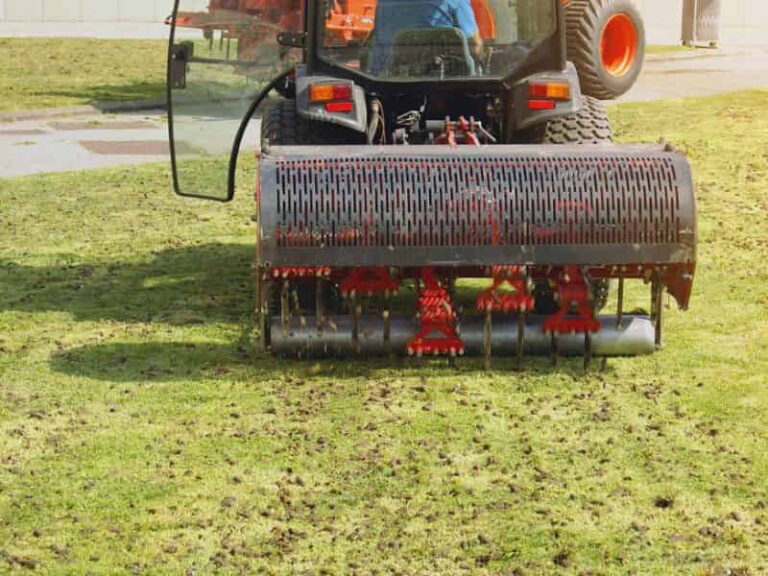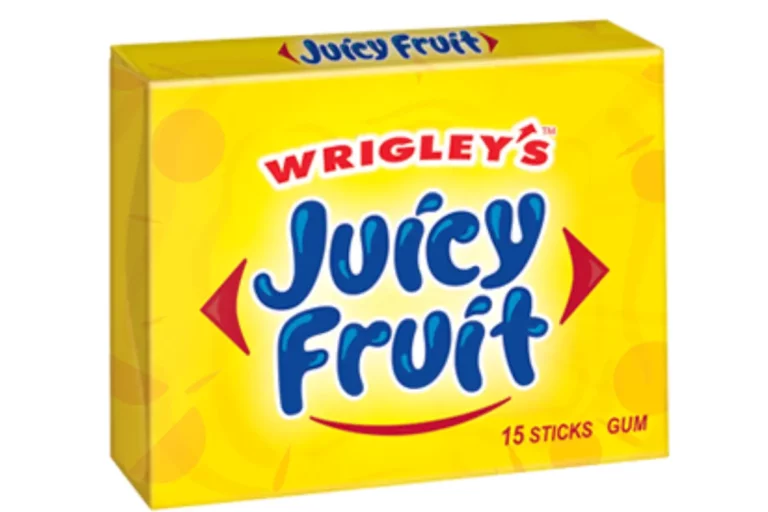Does St. Augustine Grass Grow in Shade? 5 Most Shade-Tolerant Varieties
By nature, all grasses are sun-loving plants. However, unlike other warm-season turfgrasses, St. Augustine grass has significant shade tolerance. Note that special care is needed if you must plant or overseed with St. Augustine grass in shady areas.
St. Augustine grass can grow in shade with the most shade-tolerant varieties being Palmetto and CitraBlue. These two can thrive well in places that receive a minimum of 4 hours of direct sunlight daily. In partial shades, St. Augustine grass requires about 6 to 8 hours of sunlight.
Table of Contents
Does St. Augustine grass grow in shade?
St. Augustine grass can grow under shade but will still require a minimum of 4 hours of direct sunlight to remain alive. You can grow a shade-tolerant variety like Palmetto to increase the chances of your lawn growing and filling in better.
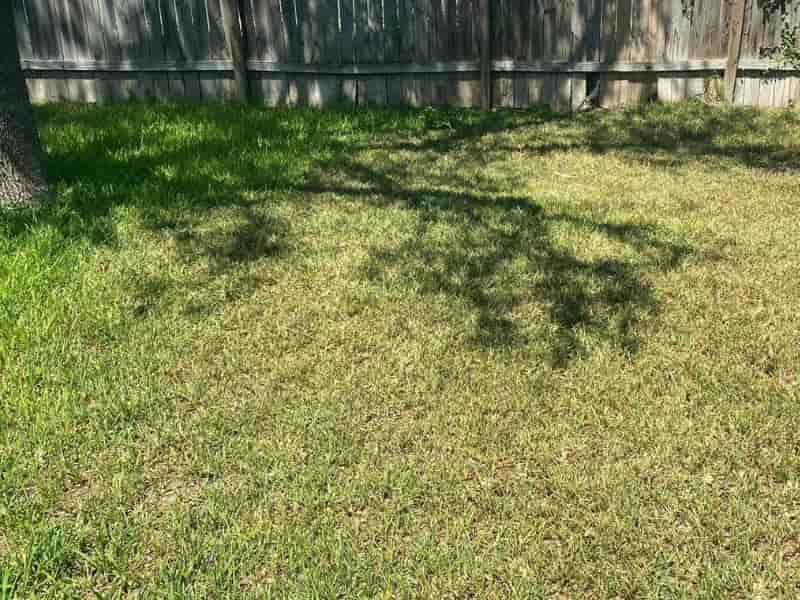
Shade-tolerant varieties will save you a large amount of fertilizer and watering efforts that you may have to put in to push the lawn to spread and grow thicker. You should apply less nitrogenous fertilizer and less water to the grasses in the shade to prevent diseases (such as fungal infections) and dying back.
However, too much shade is harmful even to the most shade-tolerant varieties such as Citra Blue and Palmetto. Plants require food and oxygen for survival. Even when under shade, the grass needs some amount of sunlight for photosynthesis and healthy blades.
Under too much shade, St. Augustine grass grows too thin for lack of food. The grass can turn yellow and in worst cases, lack of enough sunlight and food can cause severe dieback in St. Augustine turfs. You can apply potassium fertilizer to increase disease resistance for the grass in shady areas.
Even grass under a full shade such as areas behind a wall may receive sunlight at some point in the day. St. Augustine grass grown in the shady lawn will require at least 4 hours of direct sunlight per day. If the grass is under partial shade, e.g., under trees, it’ll need at least 6 hours of partial sunlight.
To avoid too much shade, prune some branches off the trees that cause too much shade. Also, minimize growing St. Augustine grass where there’s shade cast by tall buildings and walls.
Shade Tolerant St. Augustine Grass Varieties
The most shade-tolerant varieties of St. Augustine grass are Palmetto and CitraBlue. These varieties require only 4 hours of direct sunlight per day to thrive and compete for water, sunlight, root space, and nutrients. They have extended root systems as an adaptation for feeding in shaded lawns.
A general rule of thumb is that you can grow St. Augustine grass in a lawn that’s shaded, but not all varieties of this grass can thrive well.
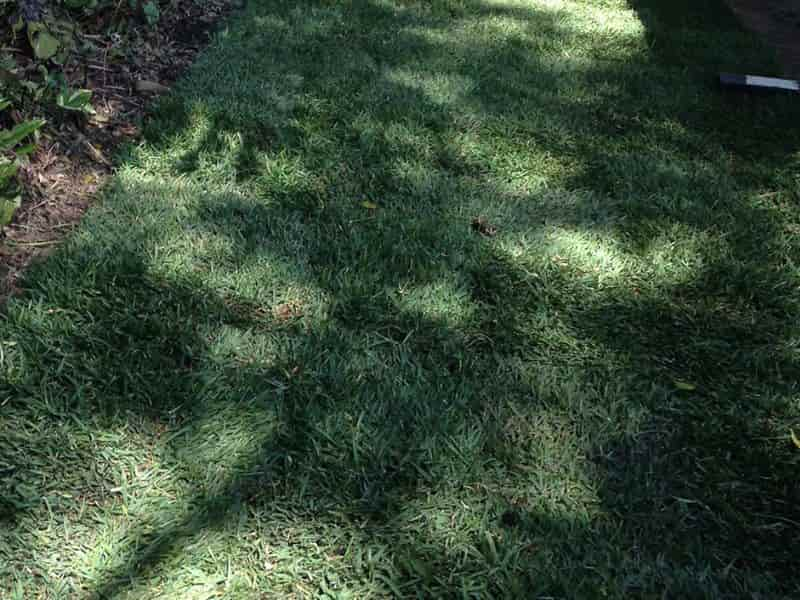
Here are the 5 most shade-tolerant varieties of St. Augustine grass:
- Palmetto
- CitraBlue
- Delmar
- Raleigh
- Seville
If you notice shedding and fading out of the grass in the shade then try sodding with shade-tolerant varieties of St. Augustine grass. Other shade-tolerant varieties of St. Augustine grass include Delmar, Seville, and Raleigh.
The Floratam variety of St. Augustine grass is the only non-shade-tolerant variety. Floratam requires more than 6 hours of direct sunlight. It does not like partial sunlight, which is why it is common in sunny places like Florida.
Tips for Growing St. Augustine Grass in Shade
St. Augustine grass grown under a shade needs special care. To get the best lawn, you must not water shady areas very often. Increasing the mowing height of the St. Augustine grass and frequently clearing the tree canopies to allow sunlight is also essential.
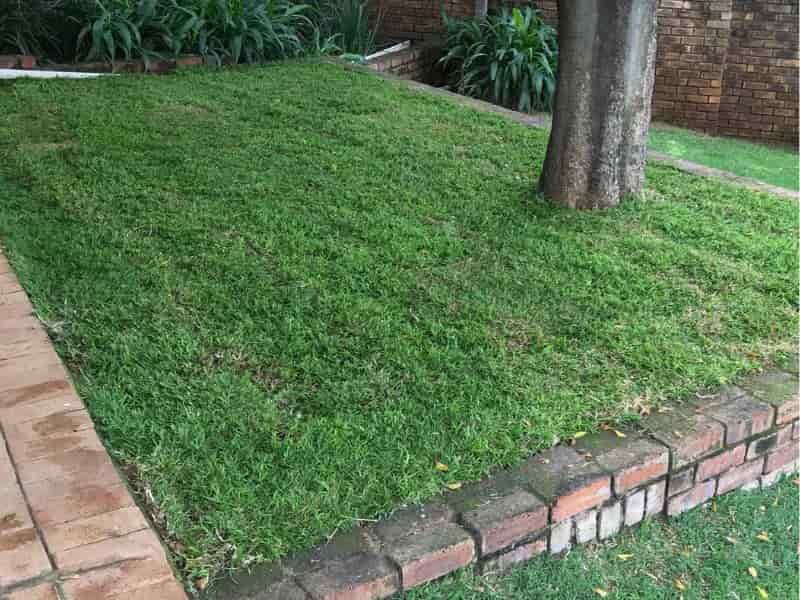
Here are tips for promoting the growth of St. Augustine grass in the shade:
1. Increase mowing height
St. Augustine grass under partial shades should be mowed between 2 – 4 inches high. At the same time, the grass under a complete shade can be mowed to a height of 5 inches. In other words, the heavier the shade, the higher the mowing height.
Grass makes its food from its leaves. Therefore, you should mow the St. Augustine grass under shades at different heights from those grown under full sun. Remember that the process of making food requires a large surface area of the leaves to absorb more sunlight.
The amount of sunlight absorbed by the grass blades is directly proportional to the size of the blade that receives the sunlight. The more sunlight absorbed by the leaves, the better the chances of healthy grass growth in a shade.
For this reason, St. Augustine grass under a shade is mowed higher. The higher the mowing height, the larger the surface area of blades exposed to sunlight. Subsequently, the higher the amount of sunlight absorbed.
With enough sunlight absorbed, St. Augustine grass makes enough of their food. Enough food prevents grass from thinning out and yellowing even under the shade.
2. Waterless
St. Augustine grass requires water for optimal growth. Water is also necessary for the food-making process by the grass. However, St. Augustine grass in the sun requires more water than the grass under a shade.
St. Augustine grass under shade requires less water because of the reduced evaporation caused by reduced exposure to sunlight. There is also reduced water uptake by grass under a shade. For these reasons, St. Augustine grass under shade requires less watering.
Ensure to irrigate your lawn grass under shade with only 1 inch of water once or twice per week. Irrigation should be done evenly throughout the rest of the lawn.
Sufficient water for the grass solves several St. Augustine lawn grass problems such as:
- Soggy soil. Water-logged lawn soil causes fungal diseases in the grass. The diseases can wipe out a whole lawn of grass.
- Weed infestation. Weeds such as chickweed thrive under shades with too much water. Weeds compete with St. Augustine grass for water, sunlight, and nutrients. They also ruin the beauty of the lawn.
- Yellowing of grass blades. Too much water causes St. Augustine’s grass blades to turn yellow. Yellow grass is not healthy, and neither does it appeal to the eye.
3. Reduce the amount of fertilizer
Another tip for growing St. Augustine grass in the shade is applying less fertilizer. While fertilizer spurs the growth of St. Augustine grass, the grass under a shade undergoes slow growth due to less fertilizer uptake.
Therefore, there is no need to apply more fertilizer. St. Augustine grass under a shade will require only 2 lbs of fertilizer per 1000 square feet per year. Make sure to apply slow-releasing nitrogen fertilizer with potassium to build on fungal disease resistance.
Applying too much fertilizer might also result in grass burning or nitrogen overload, which weakens St. Augustine grass in shady areas.
The best time to apply fertilizer to your lawn is in September and later October or early November of every year. You could use 1 pound per 1000 square feet in September and the other half in early November.
4. Clear canopy frequently
We’ve already seen that St. Augustine grass cannot grow in places that receive no sunlight throughout the year. Too much shade causes thinning and dying back of the grass. Some amount of sunlight must penetrate through the trees to the grass blades for St. Augustine to thrive.
To improve the penetration of sunlight through the trees to the St. Augustine grass, some pruning must be done. Clear the tree canopies by cutting alternating tree branches that may cause too much shade. Pruning also increases air circulation to the grass blades.
5. Control weeds proactively
Weeds like chickweed, clover, and dollar weed thrive in shaded lawns. These weeds inhibit the healthy growth of St. Augustine grass as compete for water, nutrients, root space, and sunlight. They may choke out St. Augustine grass and are also a breeding ground for insects.
To control weeds:
- Try uprooting by hand or using a lawn weed puller once they emerge. Don’t use a shovel, as it might uproot the grass itself.
- Use a pre-emergence weed killer and apply it on St. Augustine grass during Spring. The weed-killer you choose to use should be safe for your variety of St. Augustine grass.
St. Augustine grass varieties such as Seville, Palmetto, and Citra Blue are the most shade-tolerant turfgrass. However, you should take care to ensure there isn’t too much shade. Also, the grass under shade requires special care for optimal growth and health.
We’re here to help you establish and improve your St. Augustine grass lawn under shades. Contact us today, and our team of garden care and improvement professionals will be at the service of your yard.
Tip for planting
Loosen the top few inches of soil and add organic matter like compost to improve soil structure and fertility.

- St Augustine is best established using sod rather than seeds in the warm season- late spring or early summer when the soil temperature is consistently above 60°F (15°C).
- Purchase high-quality St. Augustine sod with shade-tolerant varieties if available.
- If the area receives very limited sunlight, consider alternative ground cover options or other landscaping solutions that better suit low-light conditions.
Which is better for shade Bermuda or St. Augustine?
Neither Bermuda grass (Cynodon dactylon) nor St. Augustinegrass (Stenotaphrum secundatum) is considered ideal for deep or full shade conditions. However, if you have to choose between the two for a shaded area, St. Augustine grass generally has better shade tolerance compared to Bermuda grass.
What is best alternative from St. Augustine grass?
Fine fescue, Creeping Bentgrass, Kentucky Bluegrass, and Zoysiagrass are best alternatives for St. Augustine in shady areas. You can also consider other landscaping solutions like certain types of moss, ferns, or shade-tolerant perennials.
Which grass is most shade-tolerant?
Fine fescue, Creeping Bentgrass, and St. Augustine grass are the most shade-tolerant turfgrass. Note when selecting shade-tolerant grass, consider factors such as your local climate, soil conditions, and the specific level of shade in your lawn. It’s often helpful to use grass mixtures that include shade-tolerant species to provide a more well-rounded solution for various conditions.
Is there any grass that grows in full shade?
Most grass species prefer sunlight and struggle to thrive in full shade, but some shade-tolerant grasses tolerate lower light conditions like fine fescue grasses (creeping red fescue, chewings fescue, hard fescue, and sheep fescue). However, it is important to note that even shade-tolerant grasses may not grow as vigorously in full shade compared to well-lit areas. Note that when dealing with full shade, it’s important to consider that grass growth may be limited, and alternative ground covers or landscaping solutions might be more suitable (such as certain types of moss, ferns, or shade-tolerant perennials).
Additionally, improving soil condition, proper watering, and regular and proper lawn maintenance practices can help maximize the success of shade-tolerant grasses in low-light conditions.
References
- Mississippi State University: Selecting and Managing Turfgrass for Shade
- Grady Miller and Charles Peacock, Professor and Extension Turfgrass Specialist, NC State Extension: Selecting and Managing Lawn Grasses for Shade

